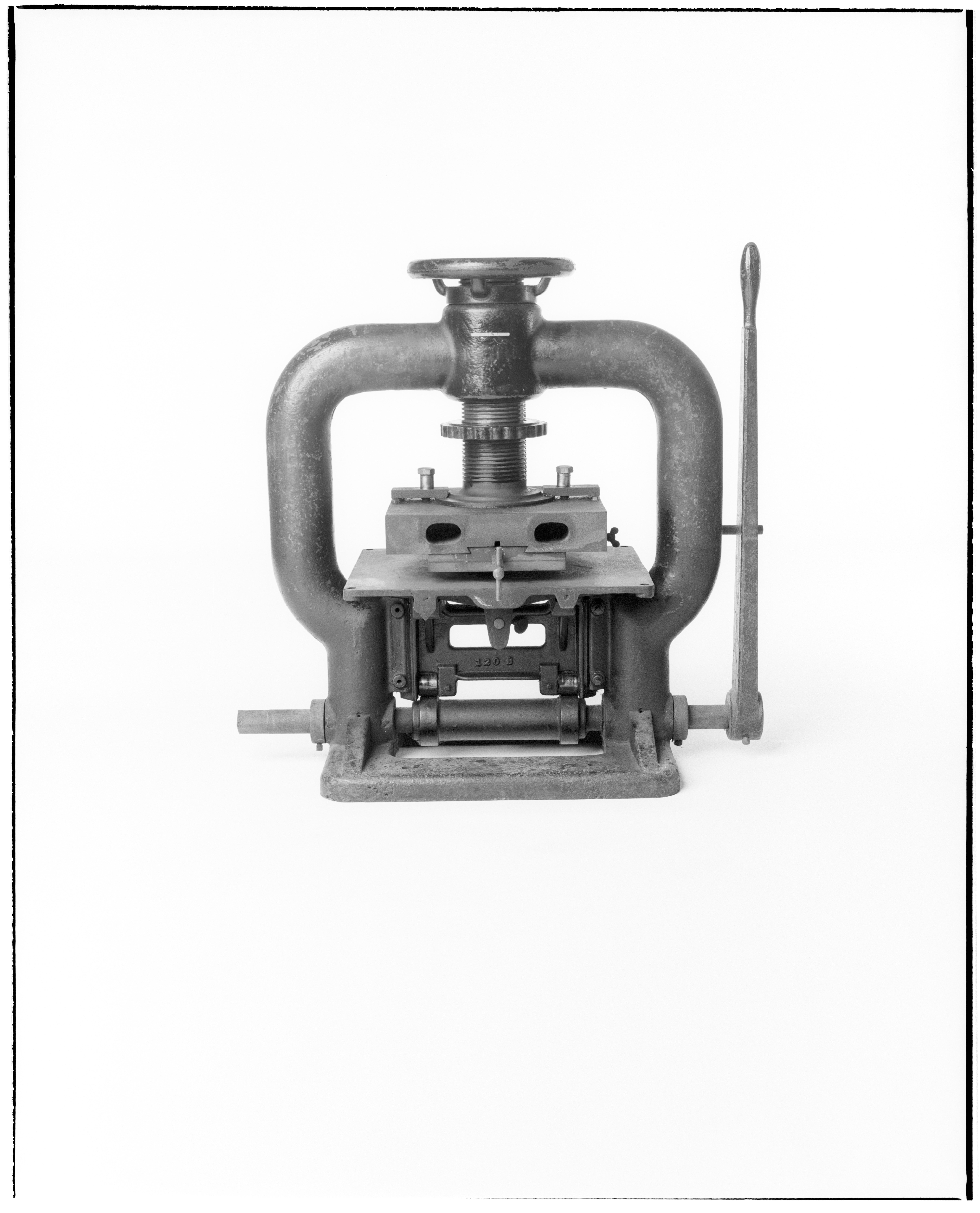Stamper, Latham American 1916

Latham “Monitor” Bench Lever Embosser (American, circa 1916)
The development of blocking presses took a different course in America than in England. From an early date American “blocking” or “stamping” presses were, apparently, used for graining book cloth before covering and as “smashers” for consolidating text blocks before sewing, as well as for blind embossing and gold blocking of cases. In consequence, they soon developed a massive form, and were adapted to power by the 1850s (1). They were less closely related to printing presses than were English arming presses, which were used only for gold blocking. An early illustration of an American stamper (2) shows a massive arch with the heated upper platen fixed at its top, and a lower platen that is raised to meet it by pulling the bar downward, all very reminiscent of our Latham press of over half-a-century later. Presses were, as in England, heated by steam or gas; our Latham was never adapted to electricity, but still has the gas lines sitting in place in its tunnels. Nicholson (1856) goes into some detail about the use of the stamper, but does not illustrate one.
On our example the words “LATHAM MCHY COMPANY” can still be made out dimly stenciled across the arch, though dirt and corrosion makes deciphering the letters difficult. Latham first appears in the Chicago directories in 1893-94 as “Latham Manufacturing Co.”; the next year the word “Machinery” replaced “Manufacturing.” Our model appeared in the 1916 Latham Machinery Company Monitor Catalogue of Printers’, Bookbinders, Boxmakers’ equipment, as the “Monitor” Bench Lever Embosser (3). Although the Latham machine retains the downward-acting lever and bottom platen that lifts to the block, as seen in earlier American stamping presses, the form and mechanism have been radically simplified with changing styles in machine aesthetics.
Printed Sources:
Comparato, Frank. Books For The Millions. Harrisburg, Pennsylvania: Stackpole, 1971.
Middleton, Bernard. A History of English Craft Bookbinding Technique. 4th. ed. Willmington, Delaware: Oak Knoll Press, and London: British Library, 1996.
Moran, James. Printing Presses: History and Development from the Fifteenth Century to Modern Times. Berkeley and Los Angeles: University of California Press, 1973.
Nicholson, James B. A Manual of the Art of Bookbinding. Philadelphia: Henry Carey, Baird & Co., 1882 [copyright and stereotyped, 1856], p. 174.
Rogers, Joseph W. “The Rise of American Edition Binding.” In: Bookbinding In America, Three Essays. Ed. Hellmut Lehmann-Haupt. Portland, Maine: Southworth-Athenoensen Press, 1941, pp. 129-185.
Footnotes:
(1) See Rogers pp. 147-149. Comparato is largely silent on the development of the American stamping press; there is actually more factual material in Rogers’ earlier and shorter study, though even he is somewhat spotty in his information.
(2) Reproduced by Rogers as fig. 44, without details of source.
(3) Latham used the Civil War steam gunboat “Monitor” in its advertising as symbolic of American (and Latham) mechanical ingenuity and skill, even though the company had not the slightest connection with the Monitor, which sank thirty years before it was founded.

